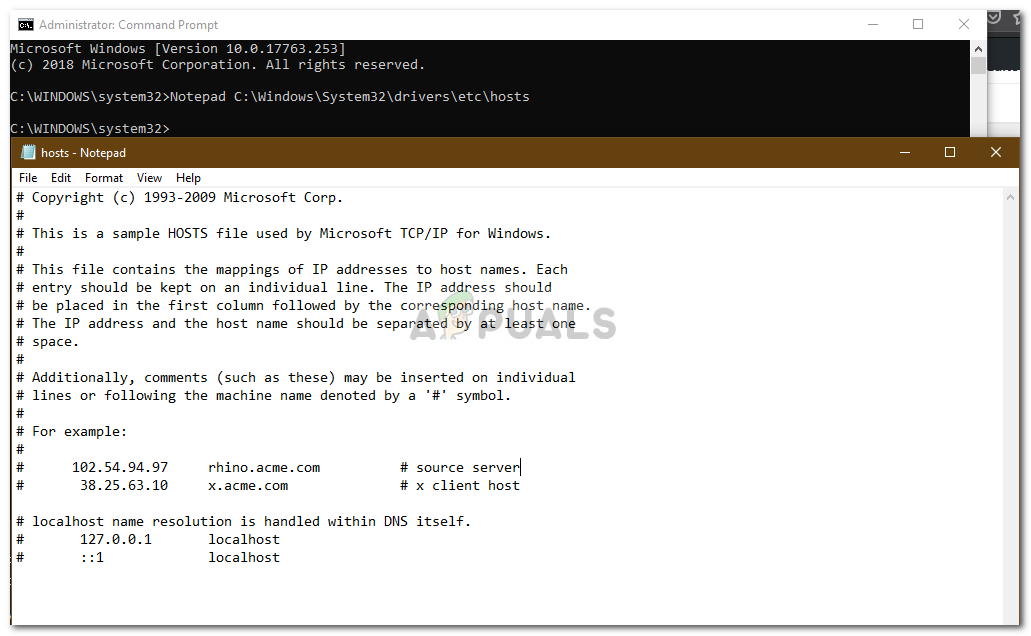Fix: Remote Desktop Can’t Find the Computer on Windows
The error message ‘Remote Desktop can’t find the computer’ pops up when your Remote Desktop connection fails. This can be due to a number of reasons including your DNS cache or the system hosts file etc. Often it is assumed that the error message is emerging because the system is not able to resolve the specified hostname due to some issue with the DNS, however, it is not necessarily the case every time. There are other factors as well due to which you are not able to resolve the hostname.

In some cases, the issue is simply because you have mistakenly entered the hostname incorrectly. You can also, sometimes, get over the issue by simply using the IP address instead of the hostname. However, in case it doesn’t work out, then you are in for a ride. In such a case, you can try to use the solutions given down below to isolate the issue.
What causes the ‘Remote Desktop Can’t Find the Computer’ Error Message on Windows 10?
Well, the error message appears because your system is not able to resolve the specified hostname which can be due to one of the following factors —
- DNS Cache: In most of the cases, your DNS cache is responsible for the system not being able to reach the hostname. In such a case, you will just have to flush it.
- No Entry in the Hosts File: The error message can also appear if your system’s hosts file has no entry of your RDP server. In such a situation, you will have to manually add it.
- Remote Desktop Connections Credentials Cache: The issue also seems to be caused by the credentials cache of the Remote Desktop Connections. To isolate it, you will have to clear the credentials cache.
Now, getting towards the possible resolutions for the issue, you can circumvent it by implementing the following solutions.
Solution 1: Flush DNS
If you are caught in the midst of the said error message then the first thing you need to do is to flush your DNS cache. In most of the cases, this will fix your issue. Here’s how to do it:
- Press Windows Key + X and select Command Prompt (Admin) from the list to open an elevated command prompt.
- Once the command prompt loads up, type in the following command and then hit Enter:
ipconfig /flushdns

Flushing DNS - Close the command prompt.
- Check if it isolates the issue.
Solution 2: Clear RDP Connections History
In some cases, the issue can also be caused by the credentials cache of the Remote Desktop Connections. In such a case, you will have to clear the RDP connections history. This can be done using the Windows Registry. Here’s how to do it:
- Press Windows Key + R to open the Run dialog box.
- Type in ‘regedit’ and then hit Enter.
- Now, navigate to the following directory:
HKEY_CURRENT_USER\Software\Microsoft\Terminal Server Client\Default
- On the right-hand side, delete all the MRU entries and then restart your system.

Deleting MRU Entries - See if it fixes the issue.
Solution 3: Adding the Hostname to the Hosts File
If the above solutions do not work out for you, then the hosts file on your system is missing your RDP server entry. In such a case, you will have to manually put it in and then see if it fixes the issue. To do this, follow the given instructions:
- Press Windows Key + X and then select Command Prompt (Admin) from the list to open an elevated command prompt.
- In the command prompt, type in the following and then hit Enter:
Notepad C:\Windows\System32\drivers\etc\hosts
- This will open up the hosts file in a notepad.

Hosts File - You will have to add a string in the following format:
- 127.0.0.1 [hostname of the server]
- Press Ctrl + S to save the notepad file.
- Close the notepad file and then close the command prompt.
- See if it isolates the issue.




